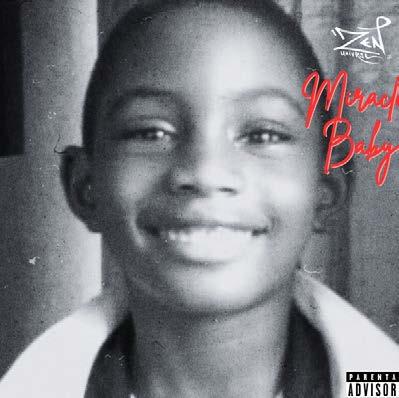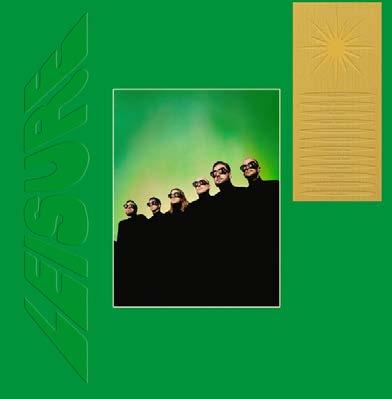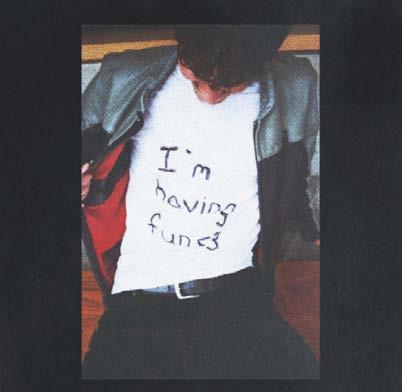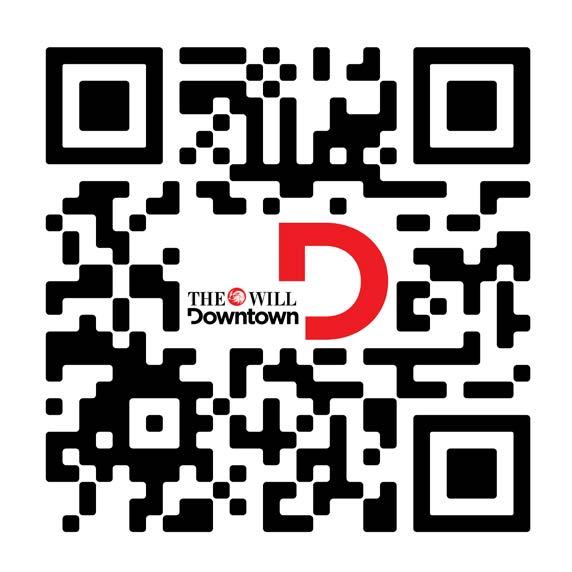
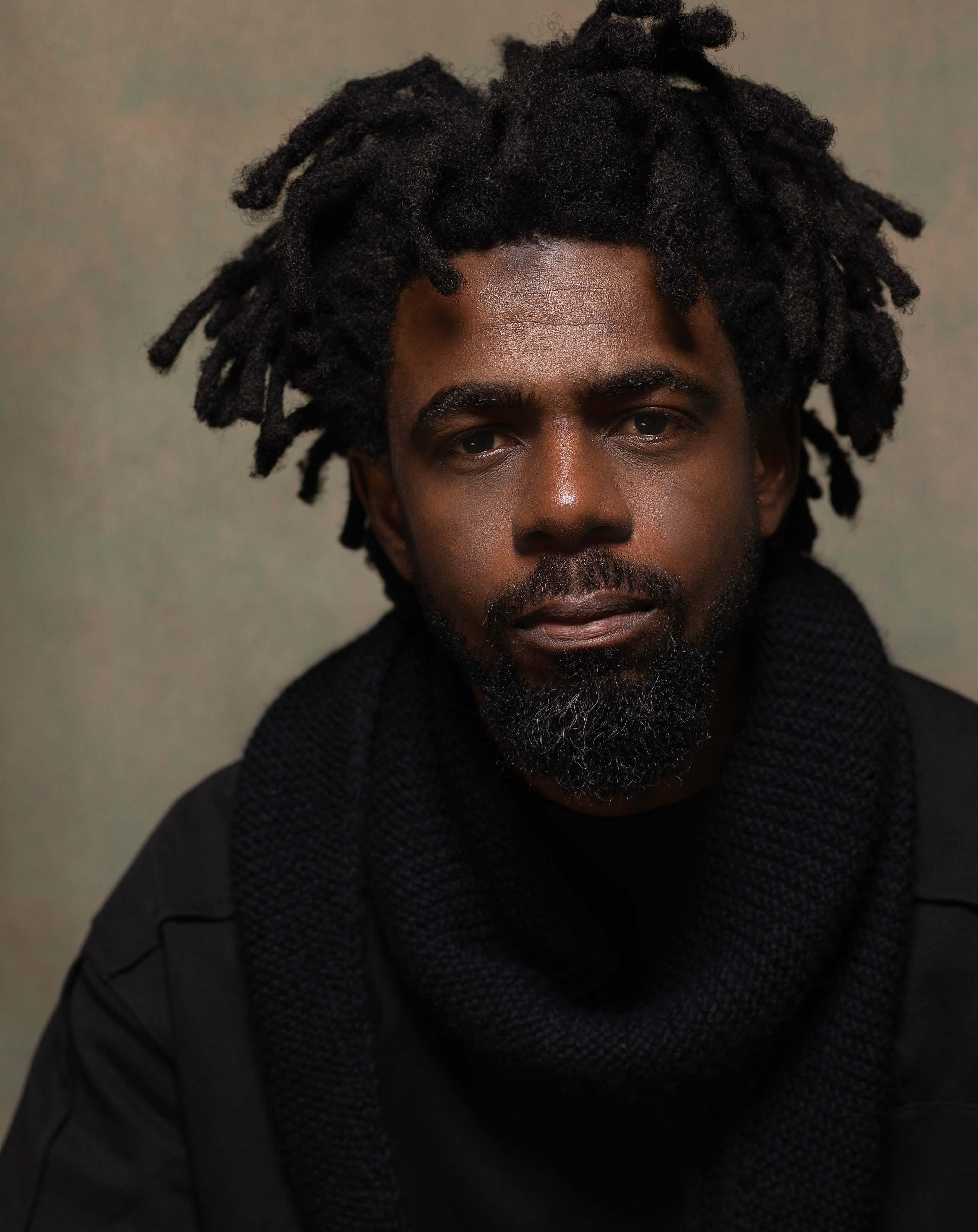

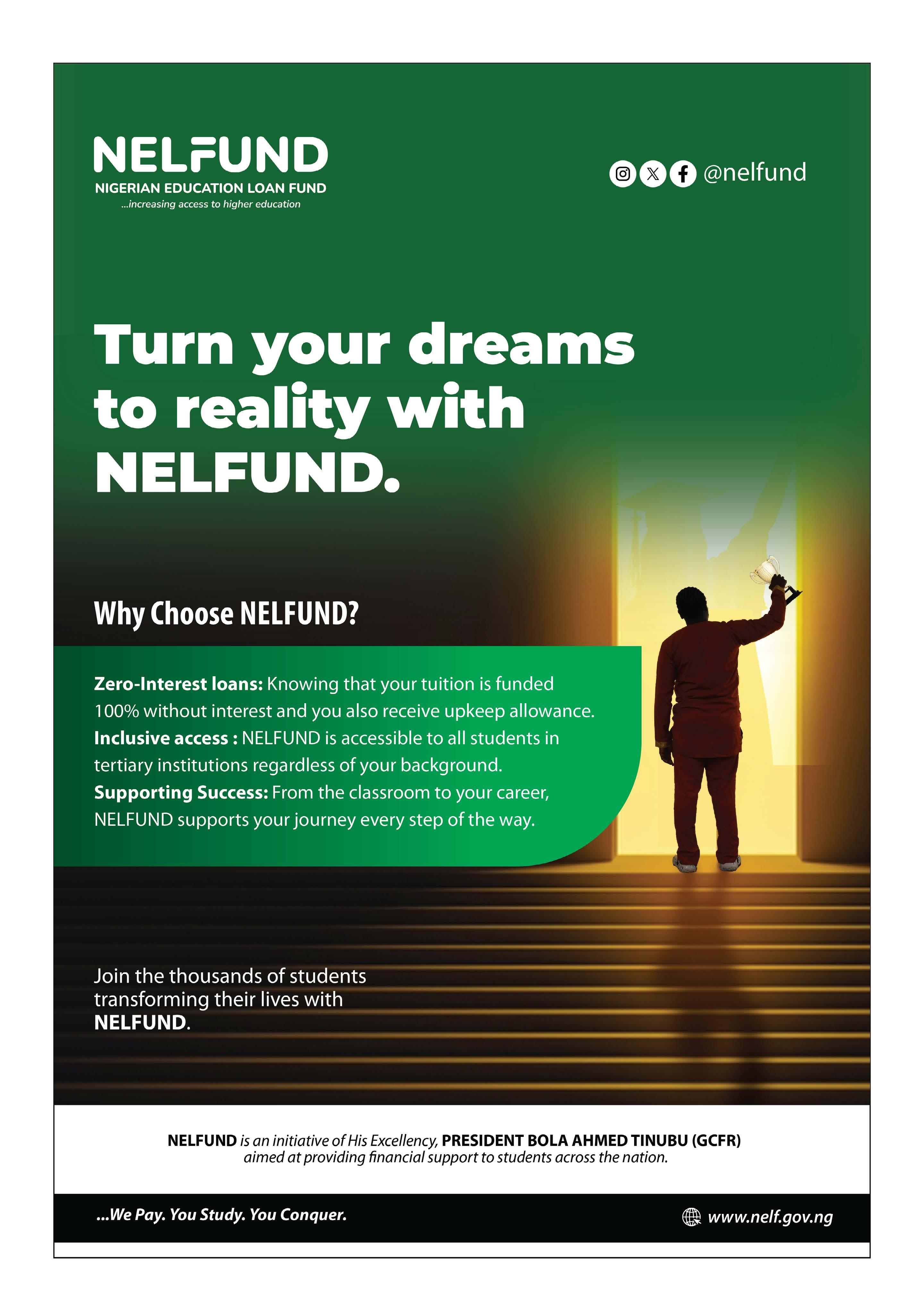





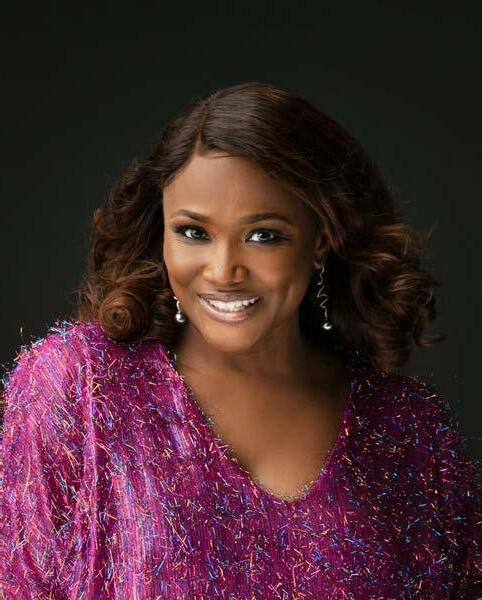

WPhoto: Kola Oshalusi @insignamedia Makeup: Zaron Standing Out Without Being Loud LIVING
hen I learned that Joel Kachi Benson won the 2025 Emmy for Outstanding Arts and Culture Documentary, it made me very proud to be Nigerian. It got me wondering what inspires his stories. Benson used to produce various kinds of content, including weddings and music videos, until one day he got an opportunity to create a series of short documentaries featuring inspiring people. The stories were those of grassto-grace, and he found them very inspiring, which marked the beginning of his journey into factual filmmaking. You might wonder what impact winning an Emmy award has on his work. Quite simply put, it opens doors to certain conversations with certain people.
There’s a lot more to Benson’s story, but I’ll let you read all about him on pages 8 to 10 of this issue.
Denim skirts have been around for decades, and they never go out of style. Regardless of the look and feel you are going for, the versatility of a denim skirt makes it work for almost any occasion. Our fashion pages showcase various styling ideas for a denim skirt, helping you look effortlessly chic every time. See pages 4 and 5 for this.
In the world of beauty, when it comes to skincare, some ingredients do all the work; squalane is one of them. This miracle ingredient is gentle on the skin and locks in moisture, leaving the skin soft and smooth. Read more about squalane on page 12.
This week, our movie choice for review is Fantastic Four: First Steps. From the review, it seems like an interesting one, so I’m looking forward to seeing it. Are you?
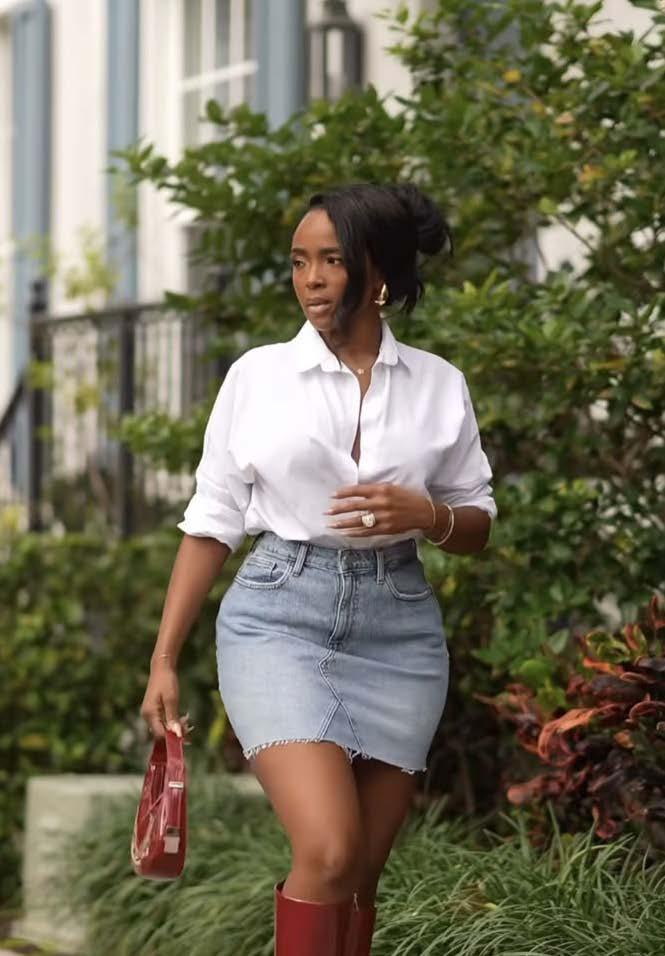
Joel Kachi Benson on Storytelling, Social Impact, and the Emmy Win When Fire Meets Fire


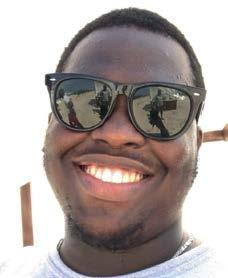


Boluwatife Adesina @bolugramm - Contributing Writer
Boluwatife Adesina is a media writer and the helmer of the Downtown Review page. He’s probably in a cinema near you.

AUSTYN OGANNAH PUBLISHER/EDITOR-IN-CHIEF
Writer: Johnson Chukwueke
Until next week, enjoy your read. www.thewilldowntown.com
Executive Editor: Onah Nwachukwu @onahluciaa
Design & Layout: Olaniyan John ‘Blake’
Digital Media: Oladimeji Balogun
Consulting Art Director: Sunny Hughes ‘SunZA’


Dorcas Akintoye @mila_dfa_ - Contributing Writer
Dorcas Akintoye is a dedicated writer with more than 2 years prolific experience in writing articles ranging from food, entertainment, fashion and beauty. She has a National Diploma in Mass Communication from Kwara State Polytechnic, Ilorin. She loves writing, listening to music and playing scrabble. She is a highly-skilled, enthusiastic, selfmotivated professional writer. Fantastic Four: First Steps 8-10
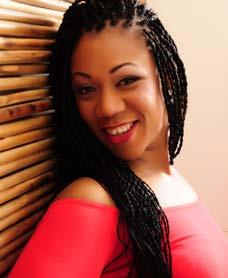
Sally Chiwuzie @unshakable.is.a.state.of.mind - Contributing Writer
Sally Chiwuzie is a non-practising barrister who owns the brand #Unshakable. She is the author of Silent Symphonies, a fictional love story, and the creator of the podcast Chronicles of #Unshakable Truths.
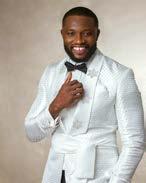










BY DORCAS AKINTOYE
Denim skirts have been around for decades, and the beautiful thing is that they never go out of style. Whether you’re going for a laid-back vibe or aiming to turn heads at a weekend event, there’s a denim skirt look for you—the secret lies in how you choose to style it. The versatility of a denim skirt allows it to work for almost any occasion, depending on how you pair it. In this article, we will show you ways to wear a denim skirt and look effortlessly chic every time.
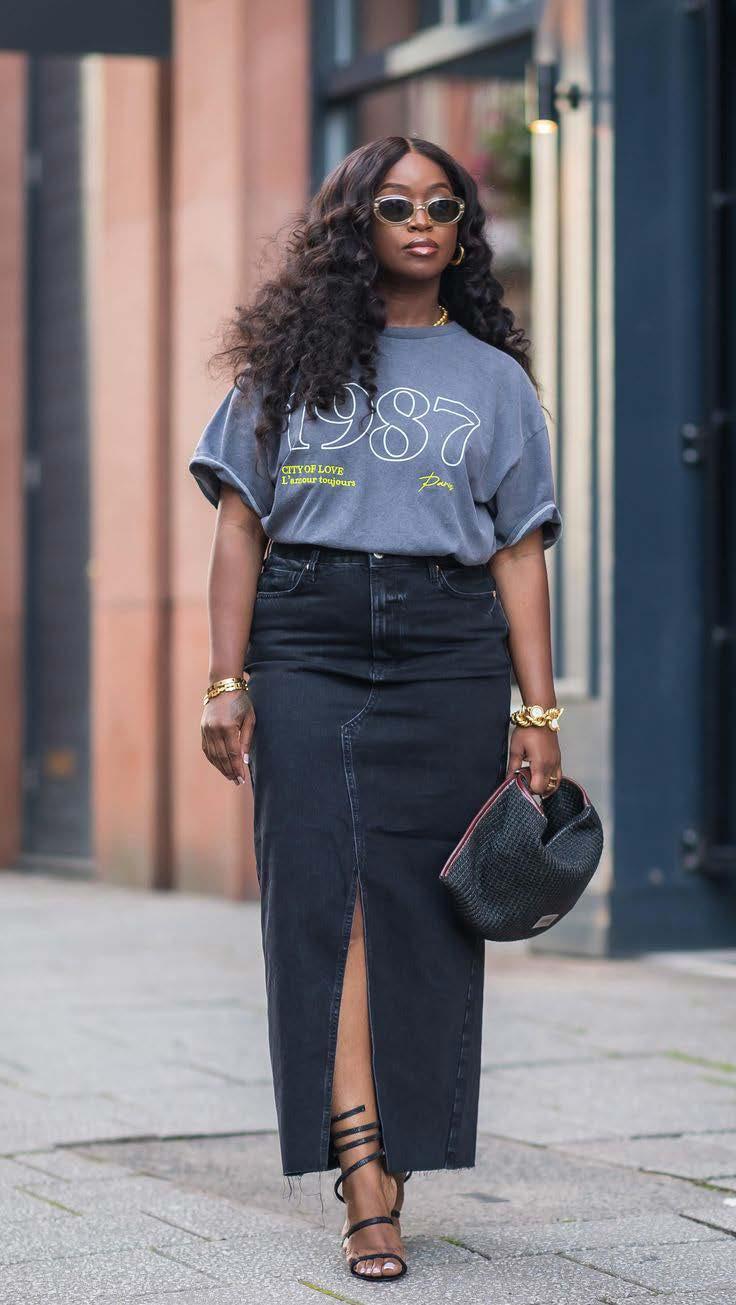
This is the most effortless go-to look that never fails. Pair your denim skirt with a fun graphic tee, maybe one with a slogan, a band name, or just a bold print, and throw on a pair of white sneakers. It’s casual, comfortable, and still trendy. You can also tuck the tee in, do a half-tuck, or tie it in a knot at the front to add a little edge. This look is perfect for errands, hangouts, or even a casual date.
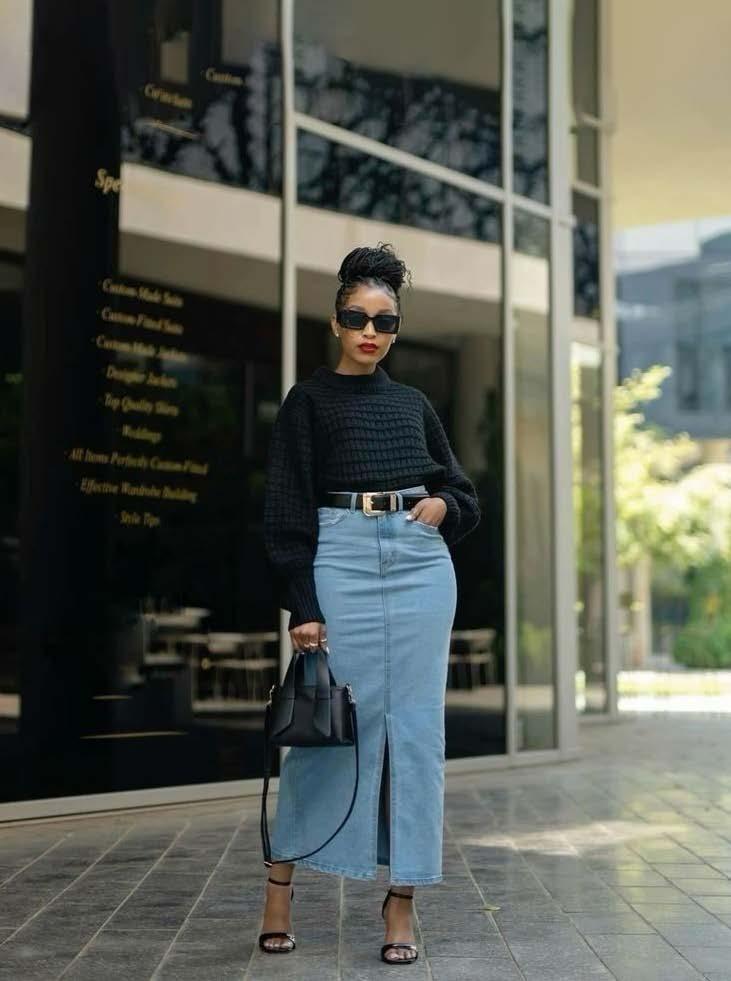
If you’re trying to elevate your denim skirt for a more polished look, pair it with a crisp button-down shirt. It could be white, striped, or even denim-on-denim if styled right. Tuck the shirt in completely for a clean finish, or leave it slightly untucked for a relaxed feel. Add some loafers or simple heels, and you’ve got a smart-casual outfit that’s great for brunch or a casual office setting.
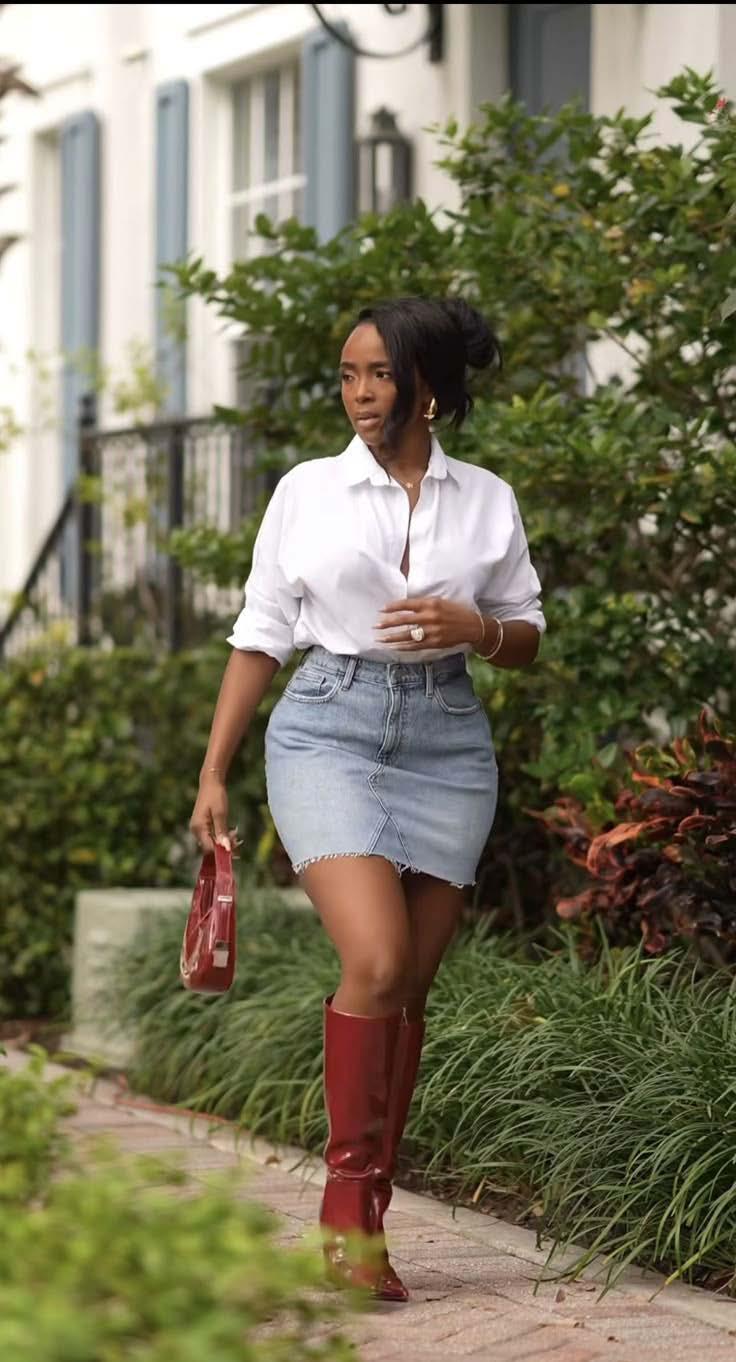
If you want to show a little skin and keep things playful, pair your denim skirt with a cute crop top. Whether it’s a fitted crop, off-shoulder, or even a halter neck, it gives a fun and youthful vibe. This combo works well for warmer days. You can add some flat slides or sandals, a pair of sunglasses, and a crossbody bag to complete the ensemble.


You can always dress up a denim skirt. If you have a date or a semi-formal event, layer a fitted blazer over a simple tank or tee, and pair it with your denim skirt. Heels or ankle boots complete the look. It’s a perfect mix of casual and classy. The blazer adds structure, while the denim skirt keeps the outfit fun and youthful. This is a great way to wear your denim skirt at night or for more serious outings.

On cooler days, you can rock your denim skirt with a cosy sweater or knit top. Choose a chunky knit for a comfy look or a fitted knit for something more sleek. Tuck it in slightly at the front or leave it hanging loose; the choice is yours. This look works well for office Fridays or cosy outings with friends.
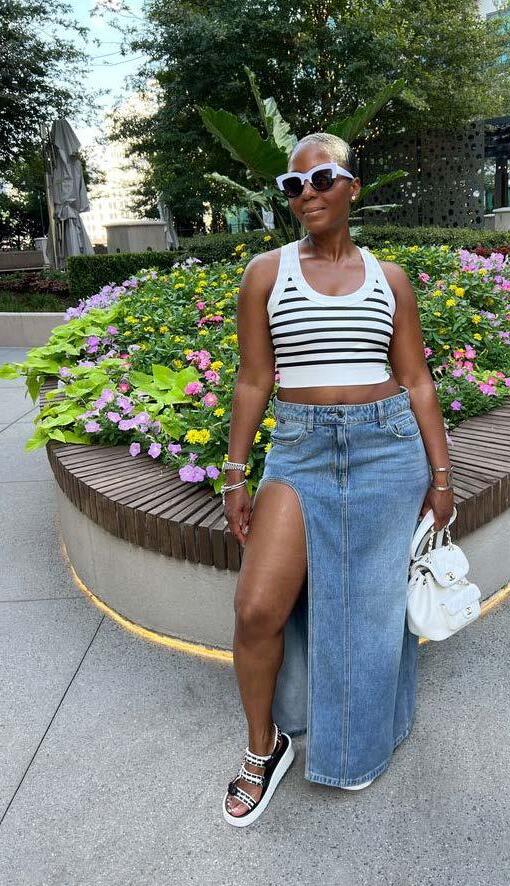
When the weather is hot and you want something simple but still stylish, go for a plain or ribbed tank top with your denim skirt. But here’s the trick: add layered necklaces, hoop earrings, maybe even a waist chain or anklet. Accessories can transform this simple outfit into a complete fashion statement. Finish with sandals, a cute tote, or a straw bag for that effortlessly cool girl look.
The way you style your denim skirt can switch up your whole vibe, from casual to classy, or playful to professional. The key is to experiment and find what works best for you. With these six simple styling ideas, you’ll never feel stuck again when you reach for that denim skirt in your closet.

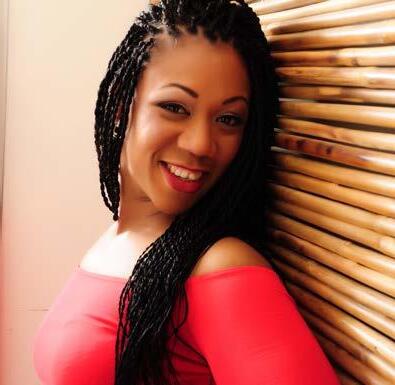
SALLY CHIWUZIE @unshakable.is.a.state.of.mind
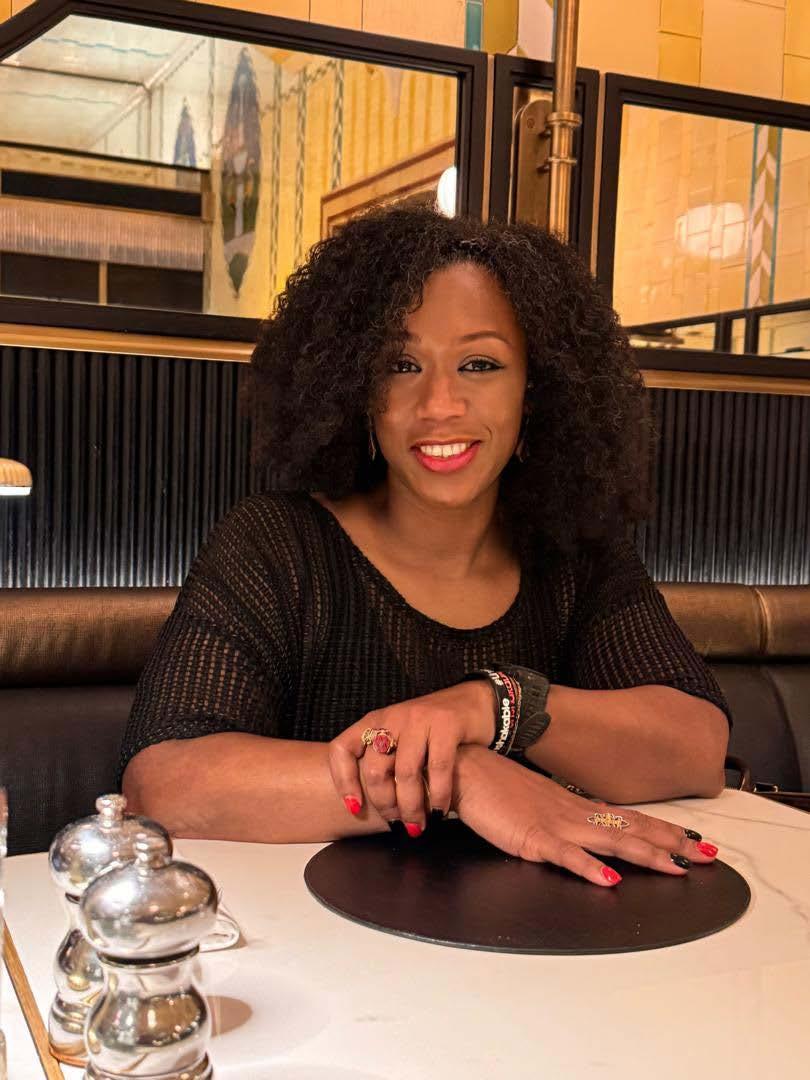
I was out on a run when I listened to it for the first time. I don’t even remember what mile I was on — but I know I slowed down. I know I smiled. I know I felt seen. I listened to it on repeat, over and over, as if her voice could lace itself around my breath and steady my steps. And somehow, it did.
The second was a long, deeply personal message from Bernie — a love-soaked prayer sent just to me.
No copy-paste. No generic birthday fluff. It was crafted with thought, layered in care, and received with such immense gratitude that I had to read it slowly, over coffee, with a soft kind of reverence. Word after word, it reminded me that I am held.
Both moments — years apart, and in different forms — left me feeling the same way.
So my hope is that when you read this, you feel what I felt.
Maybe even what my daughter felt, midfeed, when that song would quiet her world:
A moment of recognition.
A soft internal pause.
A knowing that you are loved without needing to earn it.
The other day, it was my daughter’s birthday.
And as I reflected on her journey, I sent her a song — It’s All About You by McFly.
She wouldn’t remember, of course — she was just a baby back then. But when I used to sing it while breastfeeding, she’d often pause, mid-feed. Mouth still, eyes wide… and smile.
As if, even in her infancy, the music said something she recognised. You’re safe. You’re seen. You’re loved.
That kind of pause lives in a place deeper than memory. It lives in the body, in the soul.
And that same kind of pause found me again recently — in a completely different way.
On my birthday, two moments stood out.
The first was a voice note from Nneka — a prayer, heartfelt and intentional, sent straight to my soul.
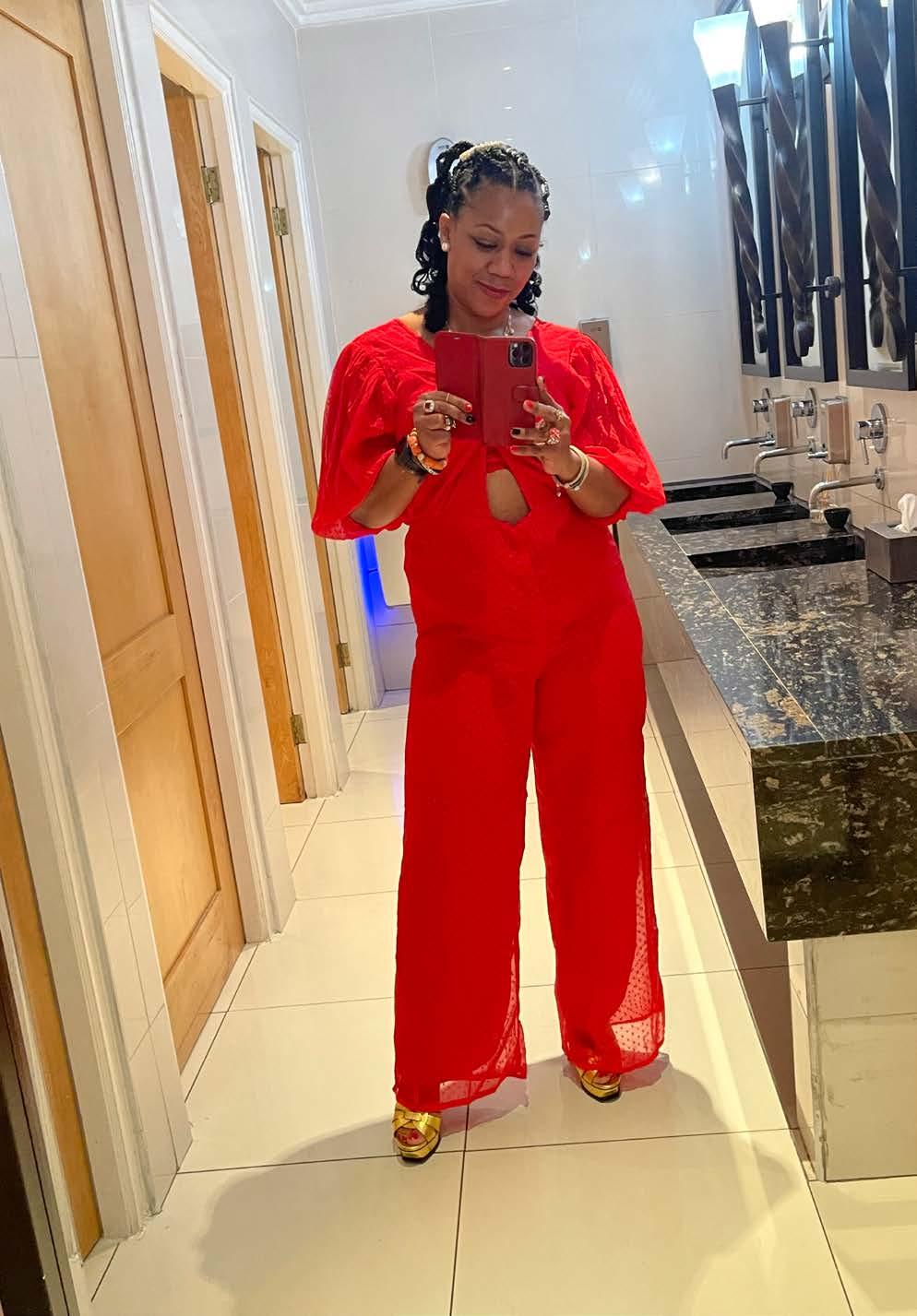
So this is for you.
You — who has carried more than anyone knows.
You — who has smiled through shattered pieces.
You — who has questioned your worth in rooms that never deserved your presence.
You — who’s still healing, still hoping, still holding on.
Let me tell you what no one tells you enough:
You are not too much.
You are not too late.
You are not too broken.
You are not behind.
You are worthy.
You are enough. You are loved.
You are a good human being, doing your best in a messy world.
You are not the version of yourself you had to become just to survive.
You are not your worst day.
You are not your silence or your shout.
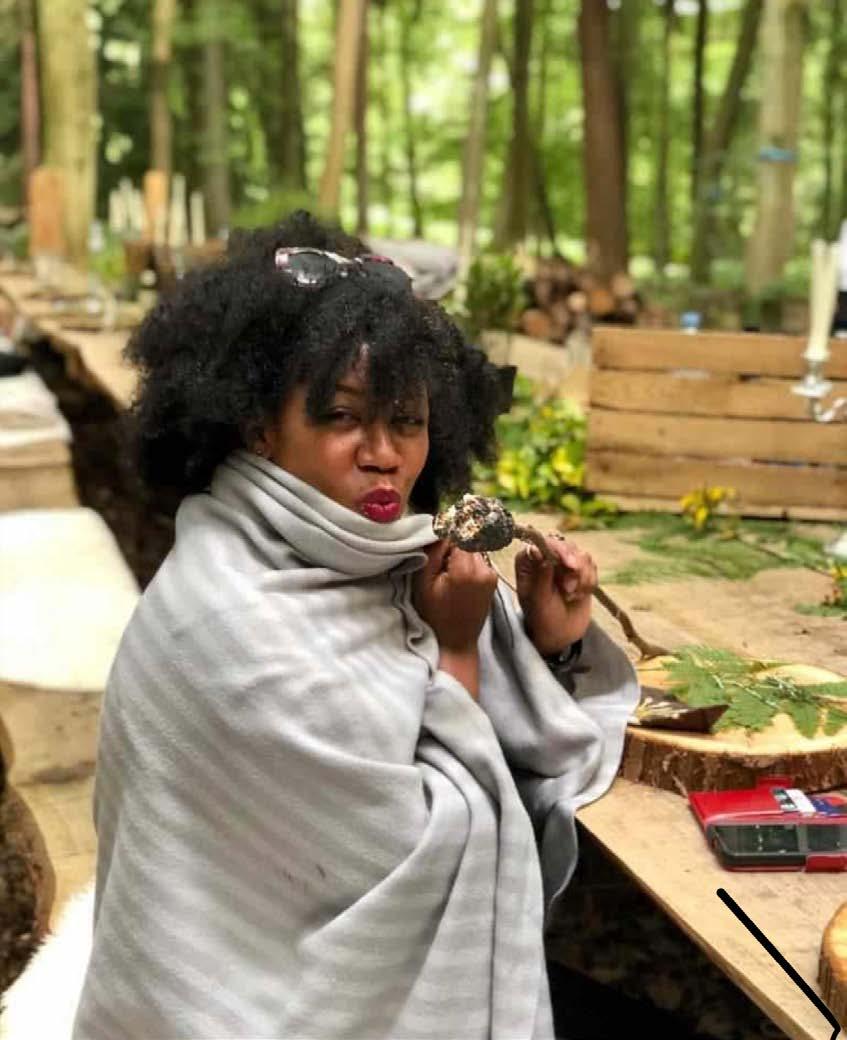
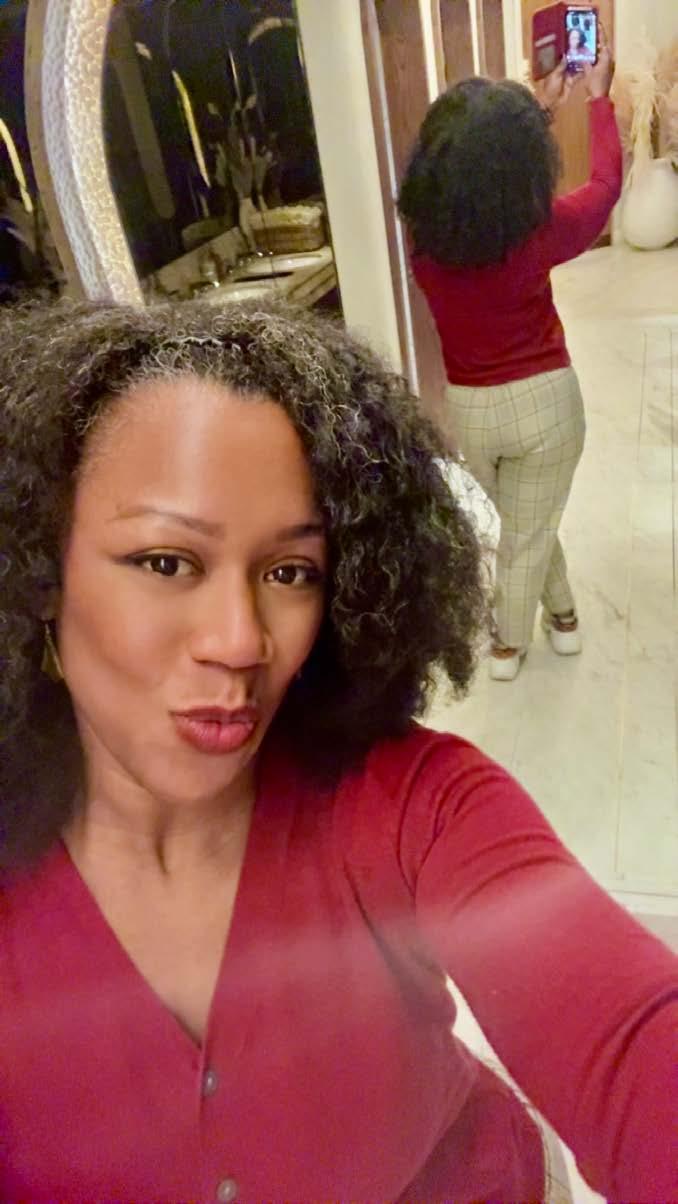
You are not what someone else failed to see in you. You are not the label, the rumour, the regret.
You are not the unfinished story.
You are still becoming.
So if today feels heavy — If you’re nursing a quiet ache, If you’re scrolling for a sign, If you’re wondering whether anyone really sees you — I do.
And even if we’ve never met, I’m rooting for you.
With the same softness I gave my daughter in those early days.
With the same weight I felt hearing Nneka’s voice in my ears as I ran.
With the same quiet awe I felt reading Bernie’s message, line by line, heart wide open. Take this as your reminder. You matter.
You are seen.
You are enough.
You are #Unshakable.
And if no one tells you that today, let this moment be your proof. Because this one?
This one is all about you. ‘See’ you next week.
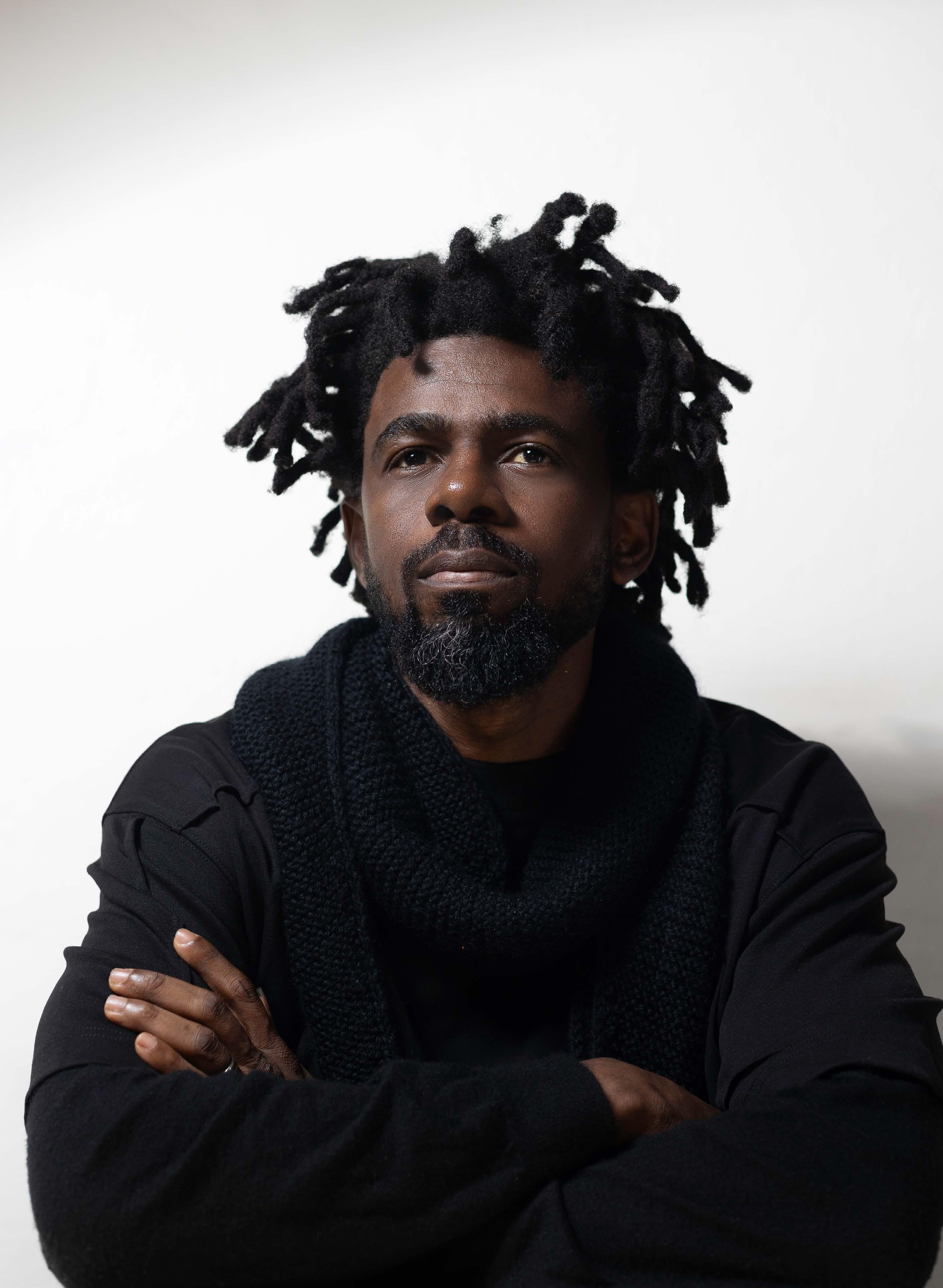
filmmaking has evolved significantly from merely depicting real-life events to serving as a catalyst for profound discussions and catalysing genuine change. Today, African stories are not just being told, they are leading on global platforms. From emotional stories of survival to inspiring tales of hope, filmmakers across the continent are using documentaries to amplify unheard voices and shine a light on what truly matters. The world is finally watching and listening to Africa’s truth, told through our own lens.
One of the leading voices in this movement is Nigerian filmmaker and virtual reality storyteller Joel Kachi Benson. Over the years, he has used his camera not just to capture moments, but to create impact. From Nigeria’s first virtual reality documentary In Bakassi, to the award-winning Mothers of Chibok, and now Madu, which just won the 2025 Emmy Award for Outstanding Arts and Culture Documentary, Benson’s work is changing the game. His stories are not just powerful, they are personal. He believes that stories can change lives, and that belief shows in every frame he creates. For him, filmmaking is more than a career; it’s a calling.
In this interview with THEWILL DOWNTOWN’s Dorcas Akintoye, Joel Kachi Benson discusses his journey into documentary filmmaking, the power of storytelling, what winning an Emmy means to him, the making of Madu, and why using film to create social change will always be at the heart of everything he does.
You’ve carved a niche for yourself as one of Nigeria and Africa’s foremost documentary and virtual reality filmmakers. Can you take us back to where it all began? What inspired your journey into storytelling, especially through the lens of documentary filmmaking?
Years ago, I used to like to do all kinds of content: music videos, weddings, and even conference events. I was doing everything. But I did get an opportunity at one time to create a series of short, I’ll call them short videos, short documentaries around inspiring people. So they’re like, you know, people who are successful Nigerians, grass-tograce stories, that kind of stuff. And I really found their stories very inspiring. So I was like, wow, I would love to do more of this kind of stuff. It gave me a lot more personal satisfaction than any other content that I’ve created before. And I think that’s really how I got into like factual filmmaking. I just suddenly found that real people, real stories held a certain fascination for me. Obviously, that has evolved over the years into what it is now, which is where I’m so focused on, yes, factual filmmaking, but factual filmmaking for impact, like social impact. But back then, I was more like, how many of such inspiring stories can I find and tell and share with the world? So that’s really how I got started.
Over the years, your work has spotlighted stories that many would rather overlook. What has kept you grounded and committed to telling such emotionally intense, socially conscious stories?
Film storytelling is a very powerful tool for social change. I truly think it does have the ability to move the needle. And so what has kept me grounded is the fact that I can use my stories to spotlight overlooked issues. I can use my films to amplify voices that would otherwise not have been heard. And film can bring change to communities. Film can change lives. It can show you things that you were not aware of before. It can bring things to your consciousness. It can awaken people’s consciousness. And being a Nigerian and African filmmaker based on the continent, there are so many things that need highlighting. There are so many things that we can talk about. There are so many issues that we’re grappling with that need to be addressed. And film provides an avenue. It can be that tool to spark conversations, catalyse change. I think my consistency is rooted in purpose. I hope that I can use my films to bring change. And so that’s what motivates me. That’s why I’m still doing this. That’s why I’ll always keep doing this, you know, hoping that through my films, some good can be achieved.
From producing Nigeria’s first virtual reality documentary In Bakassi to Mothers of Chibok, and now Madu, how has your storytelling style and process evolved over time?
I use different mediums to tell my stories, both virtual reality and 2D, like immersive technologies and 2D. The medium doesn’t matter as much to me as the story. So, in terms of how my work has evolved or my approach has evolved, I think I’m increasingly becoming more intentional about what I want my stories to accomplish. I think that’s the difference. I’m still telling the same stories. I’m still drawn to the same kind of stories. I’m still drawn to the same kind of subject matter and social issues. But I think
I’m trying to be a lot more intentional. We’re going to make this film, but what really do we want this film to accomplish? Beyond putting it on the big screen and people seeing it, and it’s out there in the world, but what more can this film accomplish? And so that’s what motivates me. That’s what inspires me. So being more intentional, I think, is one way I can say that my practice has evolved. I’m also very drawn to inspiring the next generation in terms of training and teaching. So, I’m starting to see myself more as not just a filmmaker who’s making my own films, but can I also contribute in my own way to equipping or inspiring or mentoring the next filmmaker, the next generation of filmmakers and storytellers?
“I
think the biggest challenge you face when you’re trying to tell any real story is how do you earn the trust of your characters? How do you earn the trust of these people? And where you get to a point where they’re no longer just subjects of your documentary, but there’s a certain kind of bond that you forged with them.”
Telling difficult truths often comes with pushback. What are some of the biggest challenges you’ve faced while creating socially charged documentaries, either on ground or in postproduction and have you ever felt discouraged or creatively blocked in the course of your work, and how did you navigate those moments?
“I guess winning an Emmy opens a lot of doors of opportunity. You’re able to have certain kinds of conversations with certain kinds of people. It does shift perceptions somehow and that could be a bit of a challenge. It could put some pressure on you. But I don’t allow those things to get to me. I hope I won’t allow them
to get to
me.”
Let’s start with the first one. I think the biggest challenge you face when you’re trying to tell any real story is how do you earn the trust of your characters? How do you earn the trust of these people? And where you get to a point where they’re no longer just subjects of your documentary, but there’s a certain kind of bond that you forged with them. That’s usually a big challenge in terms of earning their trust. Because you see, if you don’t earn their trust, the story is not at its most authentic. But when you’re able to earn their trust, that’s when magic starts to happen. That’s when things start to open up, and you’re drawn into their world, you’re invited into their world that you otherwise would not be able to get access to. But when you’re doing that as well, when you get that invitation, it’s also important for you to be respectful and always try to portray your people with dignity. So those are ethical considerations as a filmmaker that you have to go through. The other things, whether it’s distance or location, are secondary. But I think those ethical considerations of how I can tell the story that is authentic and yet balanced and dignifying of my subjects. I think those are things that I constantly think about and I worry about. Funding is always a challenge, especially in the world of actual filmmaking. It’s always a challenge, where you get funds to tell the kind of stories you want to tell and have that creative freedom and independence to share it, to shape it the way you would like to shape it. But I don’t let those things stop me from pursuing the story. So, a lot of times my films always start with me using my own funds to get started and then somewhere along the road, someone says, “Hey, I like what you’re doing, I want to support you.” But yeah, I think that’s it. About being discouraged or creatively blocked
in the course of your work, and how I navigate it? Stuff always happens and you would wonder how you want to navigate it. Sometimes, your character might not come through for you, or you might not just be interested in a project even when you are halfway done, or you suddenly find yourself in a phase where everything feels frozen. All these thngs happen, but I’ve come to a point where I just accept it as part of the process and keep my eyes on the big picture. I always ask myself, “Why am I telling this story?” “What is the purpose of this story?” And as long as I can always keep that in view, then everything that happens is just like a speed bump on the way. It doesn’t really stop you. It can maybe slow you down for a day or two or a week or a month. And when I make my films also, my films usually take years to make. So averagely a year and a half project is actually a fast project for me. Sometimes it can take as long as two years. So in that time, you have time to reassess the situation, maybe try a different approach, maybe try something different. But you have to keep going. As long as you keep your eyes on the big goal, the big picture, those things shouldn’t stop you. They usually don’t stop you. I keep pushing.
Your documentary Madu recently won the 2025 Emmy Award for Outstanding Arts and Culture Documentary. How does this Emmy Award impact your work, moving forward?
I guess winning an Emmy opens a lot of doors of opportunity. You’re able to have certain kinds of conversations with certain kinds of people. It does shift perceptions somehow and that could be a bit of a challenge. It could put some pressure on you. But I don’t allow those things to get to me. I hope I won’t allow them to get to me. You don’t allow those things to get to you. Just stay grounded in purpose. But yes, it does present opportunities to do more work. And I hope that it can continue to open more doors for us to do even more impactful work. I hope that it can also create opportunities for other people as well. I think this is proof that our stories matter. And our stories can have a global appeal. They can be on a global stage. They can travel across the world. And people can see it anywhere and appreciate it. I think all of that is what I think this Emmy is doing and can continue to do. It’s an exciting time, and I hope that we can use this to create more impactful work and inspire more filmmakers to believe that it is possible.
The story of Anthony Madu is so deeply moving. What drew you to his story and made you believe it was one that needed to be shared with the world? Well, the story of Anthony Madu is the story of every Nigerian. We dare to dream. It’s my story. It’s the story of the kid out there who is right now on the streets of Lagos trying to figure out what’s next for me. It’s the story of all of us. My friend and co-director, Matt Ogens, was the one who brought the story, actually, to me and said, hey, look, I found this story. It’s such an amazing story. Can you check it out and let me know what you think? And so I did some research, and I met with the kid, and we had a meeting, and I said, hey, Matt, this is great. I think that there’s a story here. I see myself in this kid. I see the hopes and the aspirations of a lot of young people in this kid, and I think his story is
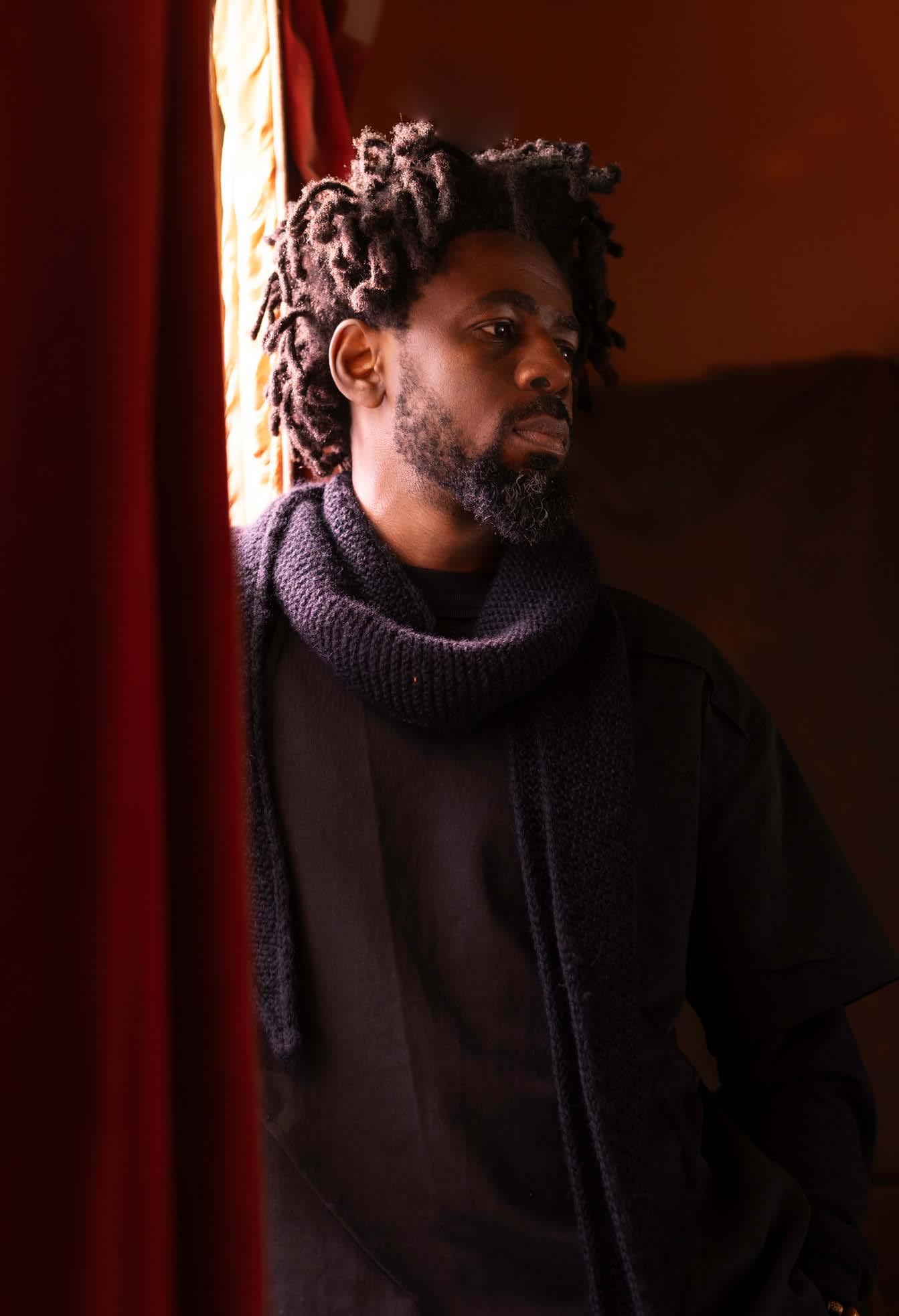
like a mirror for us. So, yeah, that’s really what drew me to Anthony’s story. His resilience, his courage, his determination to succeed, in spite of what people were saying about him and how they were laughing at him about being a ballet dancer and all that kind of stuff, but he still stayed true to his dreams. That was really inspiring. I’m super grateful that the story was brought to me, and I was chosen to be part of the team that brought it to life. But ultimately, if Anthony hadn’t had that courage and that bravery, I don’t think we’d be having this conversation we’re having today. So kudos to him.
What was it like working with Disney and co-directing with Matt Ogens? Were there any creative tensions or surprising synergies along the way?
It was both our first time codirecting, so it was an interesting experience for us. There were good times and tough times. There were times when we didn’t quite agree on certain things. But again, like what I said earlier, sometimes when you can’t find your way, you ask yourself, Where am I going? And because we were always clear about the vision of this film and what we really wanted to do, that big vision sort of overshadowed our personal differences or our personal approaches to the work. So, we would always ask ourselves, okay, look, man, I know you don’t agree with this, and I don’t quite see it your way, but what’s the bigger story here? What’s the bigger vision here? And once we remind ourselves of that, we’re able to find our way back and say, okay, you
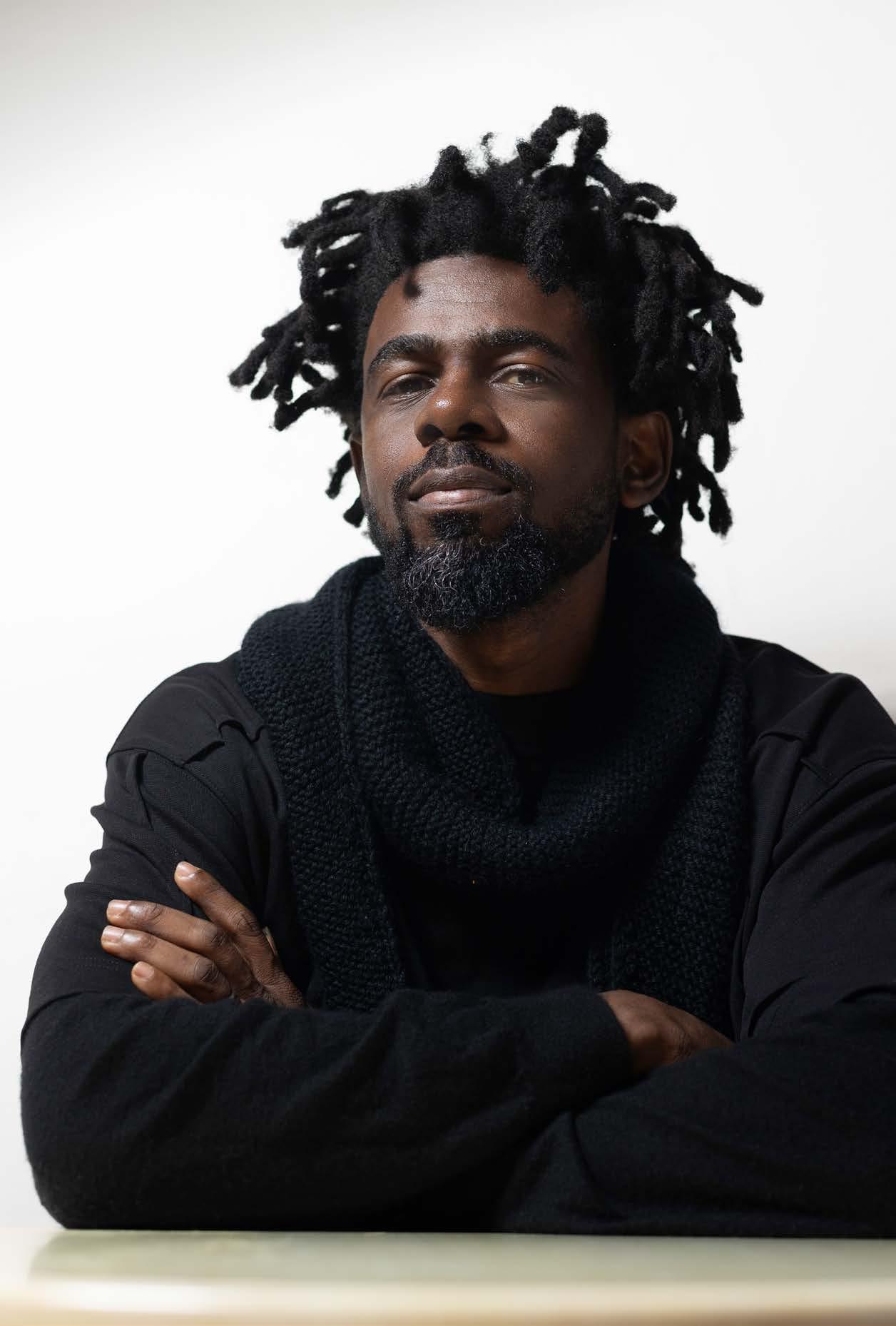
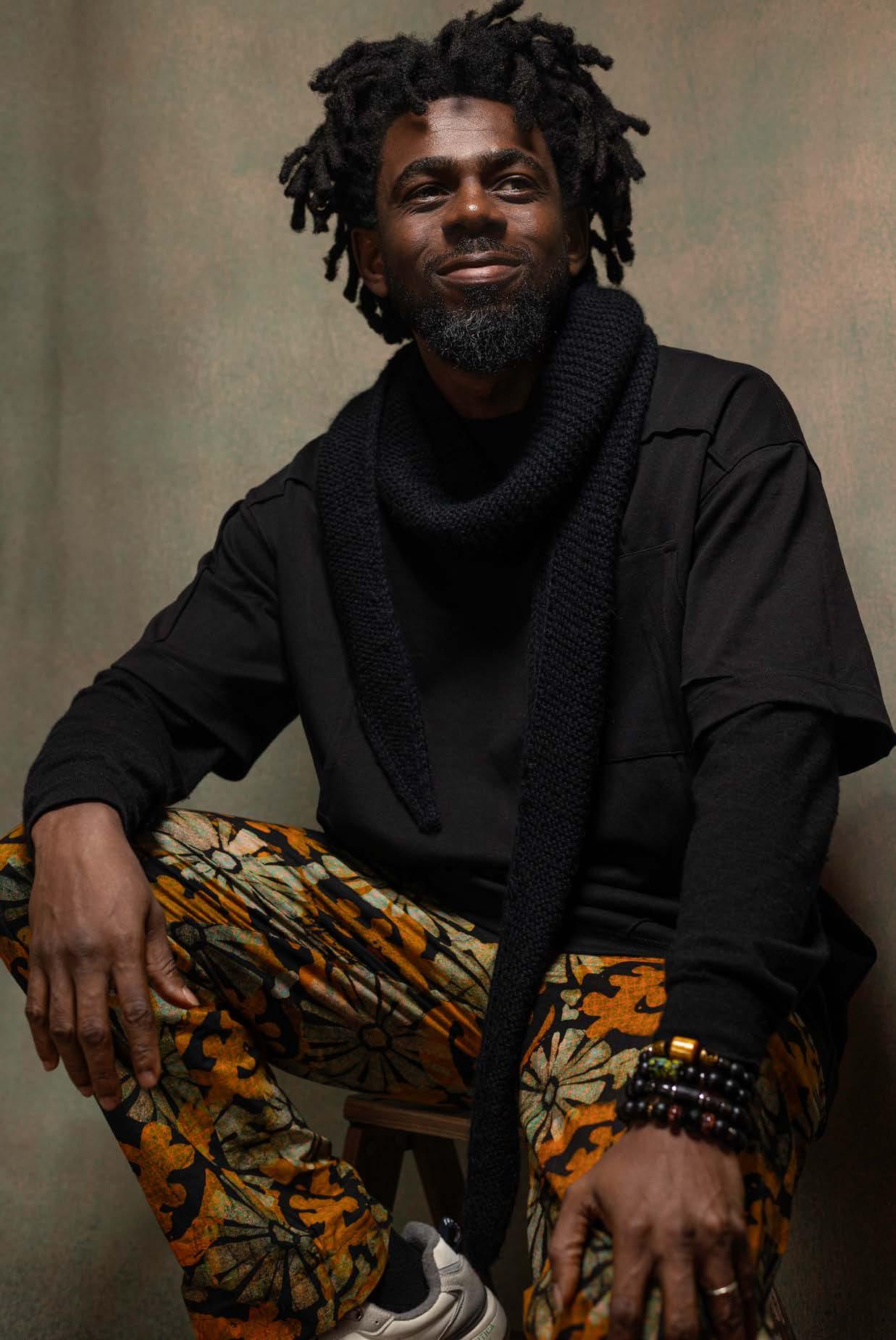
know what, maybe we should try this. So, there was always conversation. It was a beautiful learning process for both of us, how to be better collaborators, better directors, better human beings. And I think that in the end, this ended up in a really beautiful place. I think that Madu again is such a beautiful example
of collaboration, which is what filmmaking is all about, really about collaboration. I think Madu is a beautiful example of how you can really collaborate and create something beautiful for the world. You’ve often said that storytelling can be a catalyst for positive change. Why is social impact storytelling so important to you personally, and how do you measure the impact of your work? I measure the impact of my work by first of all defining what I wanted to accomplish. So, with Madu, for instance, one of the things I wanted to do was to use Anthony’s story to inspire young people across the world, but especially in Nigeria. And we’re working towards that. I get the emails, I get the text messages of people who reach out to me and say, hey, look, I was so inspired by this story. And part of what we’re doing right now is because Disney Plus is not really available in Nigeria, so we’re working with a production company to make the film available in Nigeria so people can watch it, young people can watch it. And just being able to accomplish that for me is success. That we’re able to say, look, this film can be available in Nigeria. We’re looking for ways whereby Anthony can engage young people one-on-one in Nigeria and just inspire them and have conversations with them. So those things are how I measure. That’s my metric for success with a film like this, because it’s really ultimately about inspiring young people, Anthony’s mates, those younger than him, even those older than him, that it’s all about pursuing your dreams with courage.
You’ve done documentary and virtual reality films, do you have any plans to explore other forms of filmmaking, such as feature-length narratives or scripted TV?
I’m making feature-length documentaries, but in terms of featurelength narratives and scripted, not at the moment. I think that there are a lot of very talented, very amazing people. I have a few friends who are amazing narrative filmmakers. It’s a great place to be. I want to stay in the documentary world for now and continue to make documentaries that challenge stereotypes. I want to be able to use my films to inspire other young people that it’s possible they can also pursue that as a career. So that’s where my head is at right now. Will I make a narrative sometime in the future? Maybe. Who knows? Stay tuned.
What are your creative goals over the next few years? Are there untold African stories you’re itching to spotlight next?
My creative goals over the next few years are to keep making films. I want to keep making films, but I also want to keep inspiring young people. Making films and training filmmakers are two things that are top of my agenda for now. So yeah, that’s what I’m going to be doing for the foreseeable future.


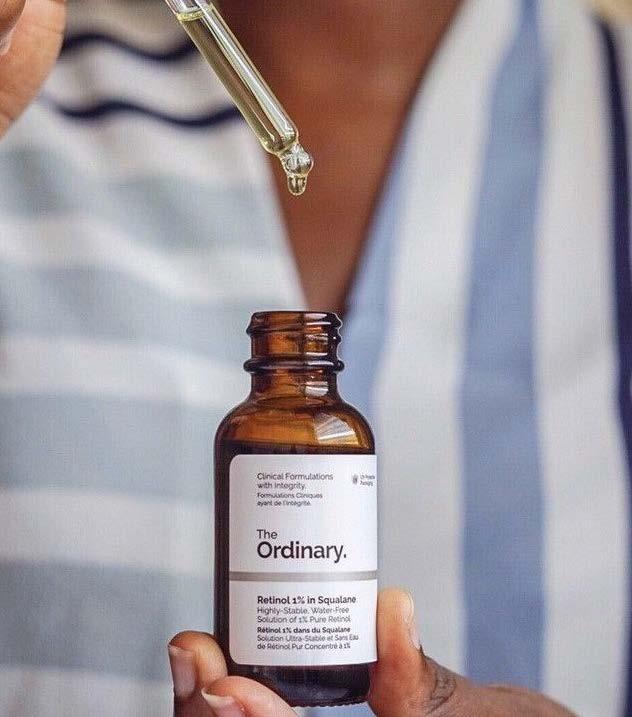
Squalane is a stable, hydrogenated version of squalene (with an e), which our skin naturally produces. As we age, our natural production slows down, which is why adding squalane to your skincare routine can help maintain that smooth, hydrated glow. It mimics the skin’s natural oils, which makes it a perfect fit for boosting skin health without causing irritation or clogging pores.
5 WAYS TO INCORPORATE SQUALANE INTO YOUR SKINCARE ROUTINE
USE SQUALANE AS A LIGHTWEIGHT MOISTURISER
If you have oily, acne-prone, or sensitive skin, using heavy creams can sometimes feel like too much. That’s where squalane comes in. It works perfectly as a moisturiser on its own, especially during the dry season when your skin needs extra hydration, but you don’t want to feel greasy. Just a few drops pressed gently into damp skin after cleansing can help lock in moisture and leave your skin feeling soft and balanced.
BY DORCAS AKINTOYE
When it comes to skincare, some ingredients quietly do all the work without making a big fuss; squalane is one of them. This lightweight, non-greasy oil has become a favourite in the beauty world because of how gentle and effective it is on the skin. It helps lock in moisture, softens the skin, and works well with almost every skin type, including oily and sensitive skin. Whether you’re just starting your skincare journey or you’re already deep into it, understanding squalane can help you level up your routine without doing too much. In this article, we will dive into everything you need to know about squalane.
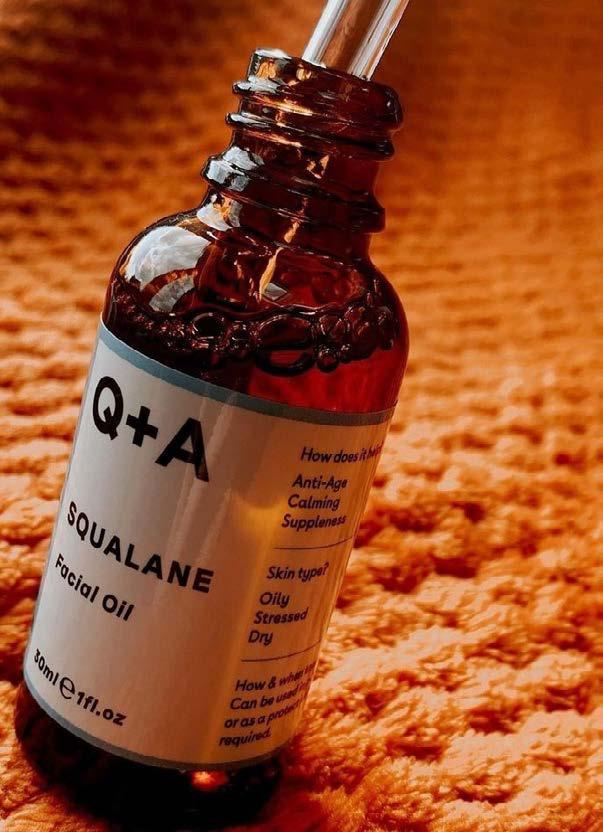

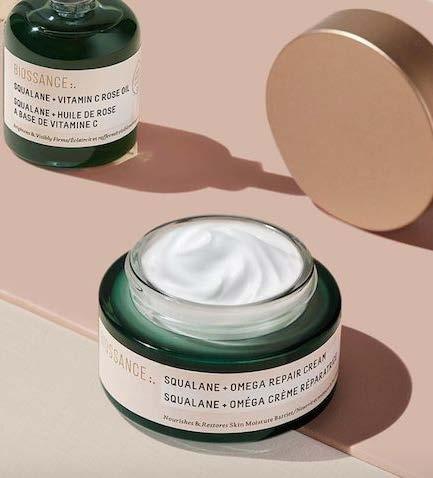
MIX A FEW DROPS INTO YOUR FOUNDATION OR BB CREAM
Sometimes, makeup can leave your face looking flat or cakey, especially if your skin is dry. A simple hack is to mix 1–2 drops of squalane into your liquid foundation or BB cream before applying it. This not only gives your skin a dewy, healthy glow, but it also makes blending smoother and helps prevent your makeup from cracking throughout the day. It’s like a skincare-makeup combo in one step.

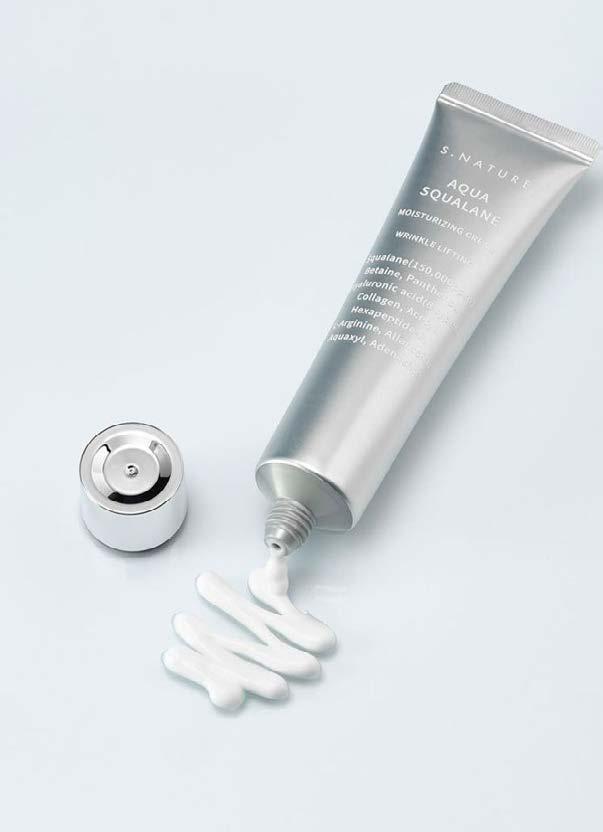
ADD IT TO YOUR NIGHTTIME SKINCARE ROUTINE
USE IT TO SOOTHE DRY OR IRRITATED PATCHES
Your skin repairs itself overnight, so giving it the right ingredients can make a big difference. After applying your toner or serum at night, seal everything in with a few drops of squalane as your final step. It acts like a barrier, locking in all the goodness from the products underneath while nourishing your skin as you sleep. You’ll wake up to softer, more refreshed skin without that heavy feeling some night creams leave behind. Squalane isn’t just for your whole face; it can also work as a spot treatment for dry or irritated areas. If you have flaky spots around your nose, rough elbows, or even post-shaving irritation, dabbing a small amount of squalane can calm the skin and add instant hydration. Its antiinflammatory properties make it gentle enough to use anywhere, even around the eyes or on eczema-prone skin.
BOOSTS THE BENEFITS OF YOUR SERUM AND CREAMS
You don’t have to replace your current products to enjoy the benefits of squalane. One of the easiest ways to use it is to layer it after your serum or moisturiser to boost its effects. Since squalane helps seal in moisture, it keeps your skin hydrated for longer and helps the active ingredients in your other products work more effectively.
Squalane is one of those skincare ingredients that proves simple and can be powerful. It’s lightweight, versatile, and easy to use, making it perfect for all skin types and routines. Whether you’re looking for something to hydrate your skin, improve makeup application, or soothe dry patches, squalane does it all.
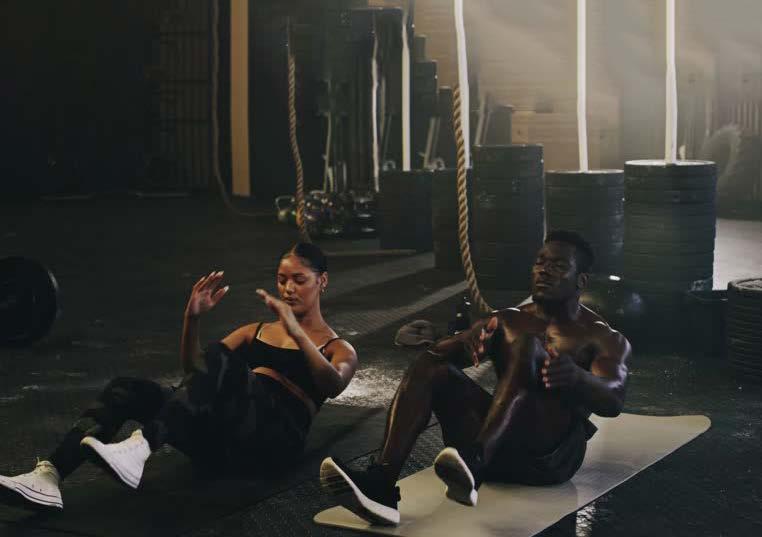
BY JOHNSON CHUKWUEKE
You start a workout routine with all the enthusiasm in the world—new gym gear, a killer playlist, and an ambitious goal. But then, life happens. You miss one workout, then another, and before you know it, you’re back to square one. Sound familiar? Sticking to fitness goals is tough, and the biggest challenge often isn’t the workouts—it’s breaking the bad habits that hold you back. Whether it’s skipping workouts, making excuses, or losing motivation, overcoming these roadblocks is the key to success. The good news? You can rewire your mindset, crush those excuses, and build a fitness routine that lasts. Here’s how to break the bad habits standing between you and your best self.
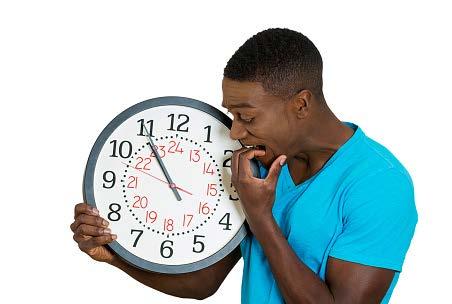
One of the biggest roadblocks to fitness success is the mindset that you’ll start when the time is right. Whether it’s waiting for a new month, a new gym membership, or a new mindset, there will never be a perfect time. The best way to start is just to start—even if it’s small. A 10-minute workout today is better than waiting for a flawless routine tomorrow.
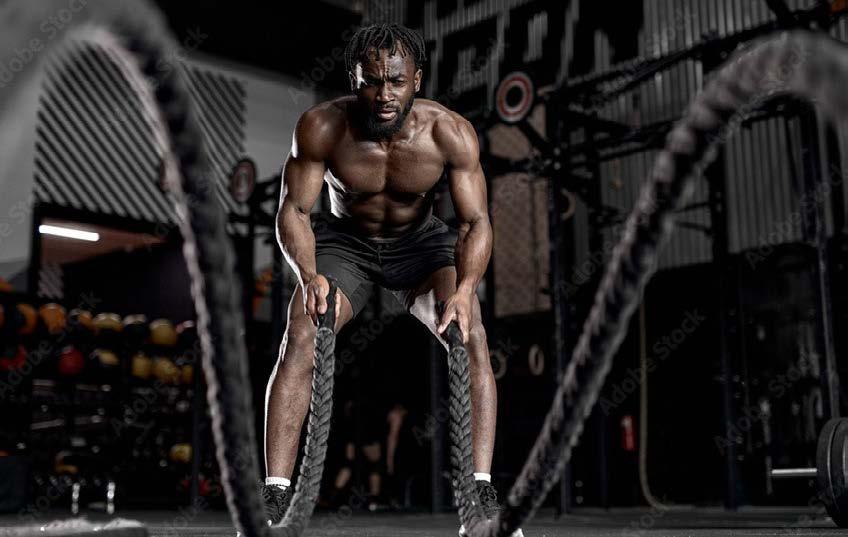
Many people believe that if they can’t commit to a full, intense workout, it’s not worth doing at all. This couldn’t be further from the truth. Small efforts add up. A 15-minute workout is still progress. A short walk is better than nothing. Fitness isn’t about perfection, it’s about showing up, however you can.

“I don’t have time.” “I’m too tired.” “I don’t know what to do.” Sound familiar? These excuses feel valid in the moment, but are simply obstacles in disguise. The trick is to replace them with solutions. No time? Do quick workouts. Too tired? Prioritise sleep and opt for low-impact movement. Don’t know where to start? Follow beginnerfriendly workout guides online. For every lazy excuse, there’s a way around it.

Celebrate
One of the fastest ways to lose motivation is not seeing immediate results. But fitness is about the long game, and celebrating small victories keeps you going. Whether it’s lifting heavier weights, running longer, or simply sticking to your routine, tracking progress reminds you that you’re improving, even when it doesn’t feel like it.

If your workouts feel like torture, you’re more likely to quit. The key to consistency is finding joy in movement. Hate running? Try dancing.
Bored with the gym? Take up a sport. Not a fan of solo workouts? Join a class or grab a friend. The more fun it feels, the easier it is to turn it into a habit.
Breaking bad habits isn’t about perfection—it’s about persistence. By making small, consistent changes, replacing excuses with action, and finding ways to enjoy the process, you can overcome fitness roadblocks and build a routine that sticks. The best time to start? Right now.

BY JOHNSON CHUKWUEKE
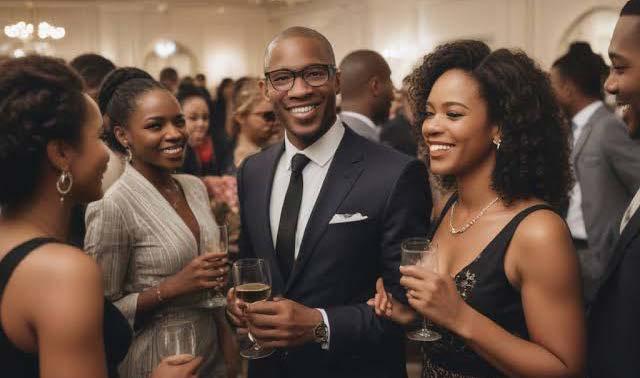
Your style speaks volumes before you say a word. What you wear can instantly set the tone for how others perceive you, so it’s important to choose outfits that make you feel confident. Whether it’s a statement accessory or an impeccably tailored suit, the key is balance. You don’t need to go overboard; a unique pair of shoes, an interesting tie, or an elegant piece of jewellery can catch attention without screaming for it.

Your body language says more than words ever could. A warm smile, open posture, and steady eye contact can make you approachable and magnetic, while fidgeting or crossing your arms can create distance. Subtle gestures like nodding to show engagement or mirroring someone’s body language can foster an instant connection.

Small talk can feel, well, small. Instead of just skimming the surface, dive into conversations that truly matter. Show genuine curiosity about the people around you by asking thoughtful, open-ended questions. Encourage others to share their stories, and actively listen to their responses. It’s not about dominating the conversation but enriching it. People remember those who make them feel heard and valued, and meaningful conversations are often the key to standing out.
You don’t need to be a comedian to showcase your sense of humour. Quick-witted remarks, selfdeprecating humour, or playful banter can leave a lasting impression. Humour makes you relatable and approachable, helping break the ice in any social setting. But remember: timing is everything. A wellplaced, subtle joke can create an instant bond, but overdoing it can have the opposite effect. The key is in moderation—let your wit shine through naturally and with a sense of timing that enhances the conversation without overwhelming it.
Not everyone thrives on being the loudest person in the room. For those who prefer a more subtle approach to socialising, it’s possible to command attention and leave a lasting impression without raising your voice. Standing out at social events isn’t about outshining others, but about showcasing authenticity and confidence in your unique way. In this guide, we will be helping you become the life of the party—on your terms.
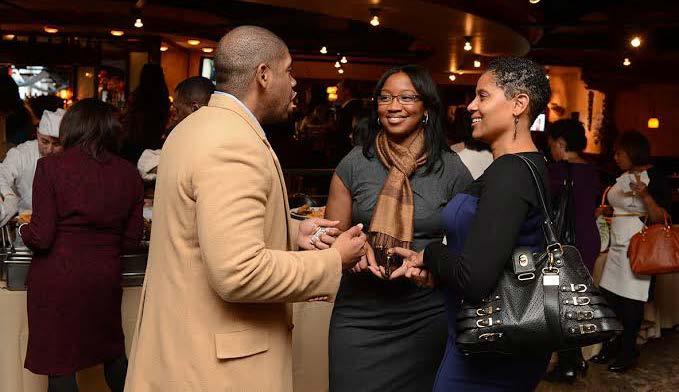
Sometimes, being the life of the party doesn’t require you to be the centre of attention. One of the most powerful ways to stand out is by helping others connect. If you notice someone standing alone or someone with interests similar to another guest’s, introduce them. Help bring people together and create an atmosphere of inclusivity. Your thoughtfulness in fostering connections will make you memorable for all the right reasons, even if you’re not the one commanding the conversation.
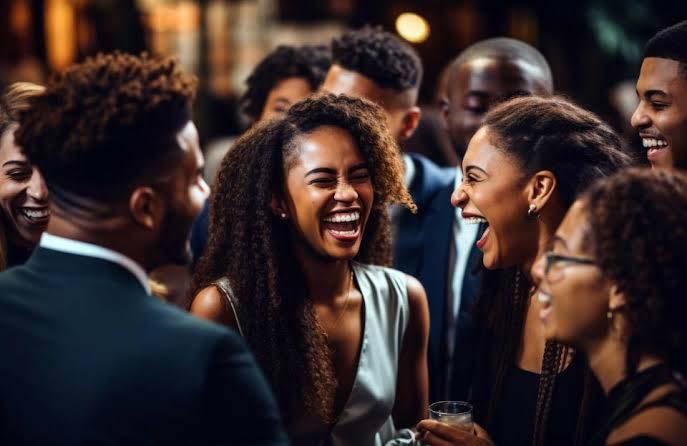
Standing out at social events doesn’t require being loud or the centre of attention. It’s about finding your rhythm and embracing your authentic self. The goal is to leave a lasting impression through subtle, thoughtful actions. By doing so, you’ll naturally become the life of the party, without needing to scream for it.

They say love is blind, but I think mine was reckless.
I knew falling for Dennis was dangerous. His family and mine had been feuding for as long as I could remember. But somehow, in the middle of all that hate, I found him.
It started on a rainy day in Lagos. I was at a friend’s art exhibition in Victoria Island when I saw him. He was standing across the room, sipping red wine, dressed in all black, and laughing that deep, rich laugh that stirred something in me. I recognised him instantly. Dennis Adeniyi. My father’s rival’s son. We locked eyes, and something electric passed between us. I looked away first. I had to. But fate or maybe madness kept drawing us together. That night, he found me on the balcony, trying to escape the crowd and the noise.
“You’re Ada Obasi, right?” he said, that familiar last name hanging between us like a warning.
I turned to face him. “And you’re the enemy.”
He smirked. “Funny. I don’t look like one.”
We both knew it was a bad idea. But that didn’t stop us. We started talking, texting, and seeing each other secretly. It was like tasting something forbidden, and I couldn’t stop once I’d started.
Dennis made me feel seen, not as Ada the politician’s daughter, or Ada the face behind charity galas, but as a woman. He touched my mind before he ever touched my body. And maybe that’s what made it more dangerous.
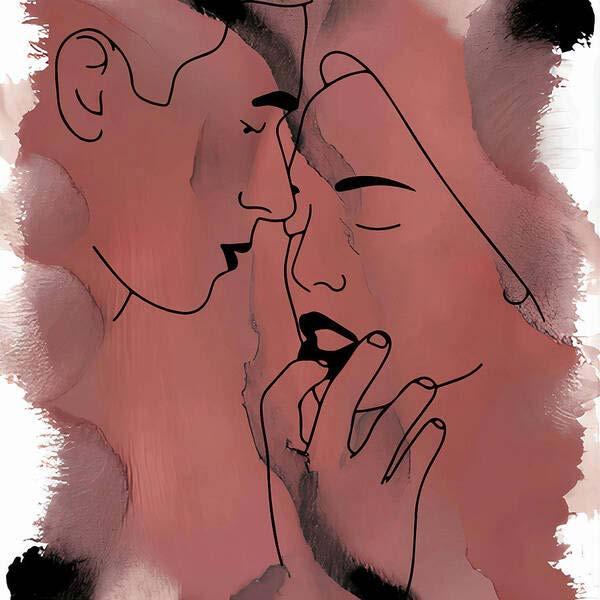
One night, after a long day’s work, we met up in our usual spot. He opened the door, and I barely stepped in before his arms wrapped around me. “I’ve missed you,” he whispered, his breath warm against my neck.
I didn’t say anything. I just kissed him. Everything after that felt like fire. Our clothes came off between deep kisses and urgent touches. My heart was racing, not just from desire, but from the fear of being caught, of what everything meant.
But in that room, all I felt was him.
Dennis took his time. His hands explored me like
I was art he had waited years to touch. His lips moved from my neck to my chest, leaving trails of heat that made my back arch. He whispered my name like a prayer, like he was worshipping every inch of me.
When he entered me, it was slow and deliberate, like he was trying to memorise how I felt around him. And then it got deeper, rougher, like he was claiming me, like we both knew there was no going back.
I held on to him like he was oxygen.
It wasn’t just sex. It was two people burning in silence for too long, finally letting the fire consume them.
After, we lay there in the dark, his fingers tracing circles on my bare skin.
“Do you think this will end well?” I asked quietly. He sighed. “I don’t know. But I know I’d rather fight the whole world than let you go.”
I looked at him, at this man I was never supposed to love, and in that moment, I didn’t care about the feud, the gossip, or our families.
I just wanted this. Us.
Maybe we were mad. Perhaps love like ours never ends well.
But as I watched the sun rise through the curtains and felt his arms tighten around me, I realised something. If this was war, I didn’t mind surrendering.
BY BOLUWATIFE ADESINA

Ironically
enough, the Fantastic Four have never had a fantastic movie. The 2005 Fantastic Four was … fine. 2007’s Fantastic Four: Rise of the Silver Surfer wasn’t even that. And the less said about the 2015 reboot, mystifyingly styled FANT4STIC, the better. But that losing streak ends with The Fantastic Four: First Steps, proof proper that a movie about Marvel’s First Family can indeed be fantastic.
The latest reboot, directed by Matt Shakman (director of 2021’s WandaVision) from a script by Josh Friedman, Eric Pearson, Jeff Kaplan and Ian Springer, drops us onto Earth-828 (as compared to the mainline Earth-616), an alternate, retro-futuristic 1960s planet where our heroes are praised (and marketed) the world over. (So much branding, so much merch.) Much like with the new Superman, there’s no real origin story being told here (one quick, well-done montage aside). Rather, these heroes — Reed Richards/Mister Fantastic (Pedro Pascal); Sue Storm/Invisible Woman (Vanessa Kirby), Reed’s wife; Johnny Storm/Human Torch (Joseph Quinn), Sue’s brother; and Ben Grimm/The Thing (Ebon Moss-Bachrach), Reed’s best friend — are known quantities in this world; anything you don’t know, you’ll pick up along the way.
(For those unaware, the group — all astronauts, brilliant in their own way — gained their powers while exposed to cosmic radiation during a space mission.)
First Steps, like the latest Marvel Cinematic Universe film Thunderbolts, takes a fairly grounded approach to its storytelling. Yes, the heroes have superpowers, there’s an underground city beneath the streets of New York, and the world is facing total annihilation by Galactus, World-Devourer (Ralph Ineson), but the core of First Steps is family and what you’ll do to protect yours.
That latter part comes into stark relief when Sue becomes pregnant. (The baby-proofing sequence is delightful, thanks in large part to H.E.R.B.I.E., Reed’s goofy little helper robot that steals every scene it’s in.)
“Nothing is going to change,” Reed says. But that’s the thing: Everything changes, especially once Galactus’ herald, the Silver Surfer (Julia Garner), announces to the world that death is coming for them all.
But while the story is as grounded as any comic book adaptation can be, the action is Marvel-sized — to excellent effect. The action sequences pack a nice punch, particularly Johnny’s fire-based abilities and Sue’s force fields. (Ben mostly just breaks things, while Reed more often shows off his genius-level intellect than his ability to stretch his body to ridiculous proportions.)
And there’s a charming appeal to the retrofuturistic aesthetic of First Steps, with oldtimey TVs and blackboards living alongside teleportation machines and flying cars. It’s a nice contrast to the powerhouse computergenerated (CG) effects, with highlights including Johnny absorbing the flames from a raging fire and the Silver Surfer’s ability to phase through matter.
But what makes First Steps stand out is how much it leans into the human (and generally very nerdy) side of the Fantastic Four. Yes, they can save the day, but they cook together, banter with each other, and raise each other up. They’re a family first and foremost, and you never forget that, even when lines like “The wormhole is bending the beam!” are being shouted.
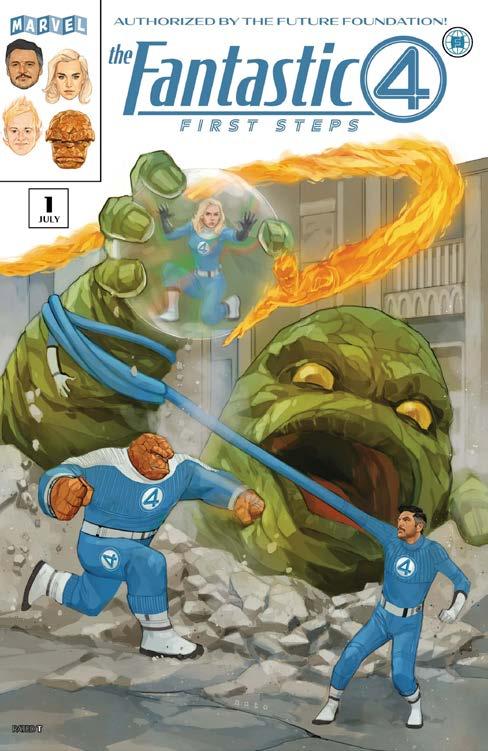
Some very minor quibbles aside (wonky CG at times, a couple of sequences that go on just a touch too long), First Steps — the beginning of the Marvel Cinematic Universe Phase Six — is the movie this family of heroes deserves. It’s heartfelt, actionpacked and just plain fun (and comes with an intriguing midcredit scene you don’t want to miss). Fantastic indeed.
Rating: 7.5/10

Scan this with your camera or click to access the playlist (Youtube Music)
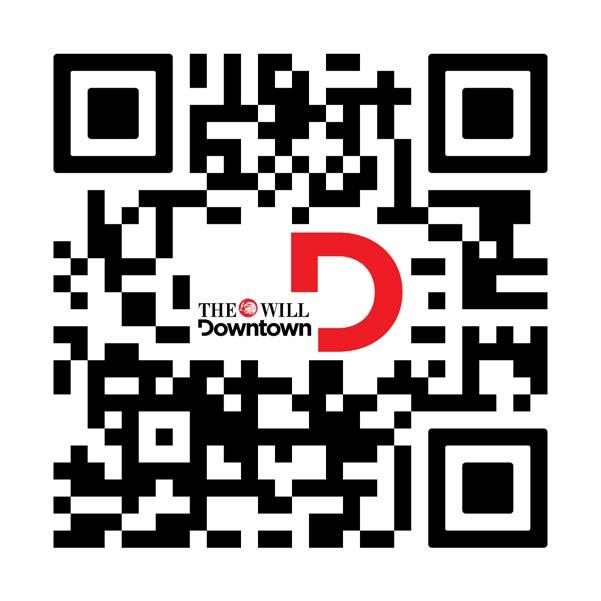
Scan this with your camera or click to access the playlist (Spotify)
genuinely thrilling — choices that mean you’ll never look at Ryan Coogler’s Black Panther films in the same way again.
Wakanda, famously, is forever. So it makes sense that Wakandans’ adventures can go backwards in time as well as forward. In Eyes
Of Wakanda — a four-part animated anthology series which expands the mythology first put properly on screen in Black Panther — the scope is not limited to the present day, or even Wakanda itself.
Developed and executive produced by Ryan Coogler, the series thrusts us into an Afrofuturist world of the past, from ancient Crete to 19thcentury Ethiopia and beyond, where warriors from Black Panther’s homeland fight to reclaim what they hold most dear. The focus here is on new characters rather than recognisable heroes, and for the most part that pays off, thanks to some snappy writing and strong voiceacting; Jacques Colimon, in particular, has a lot of fun voicing the warrior Basha, a cocky spy who doesn’t take life too seriously; while Winnie Harlow also impresses as Noni, a former member of the Dora Milaje who could have easily led the whole series.
The animation here is strong. Eschewing the flat, occasionally stilted style of What If?, the animators instead draw inspiration from contemporary AfricanAmerican artists to evoke a handpainted (but computergenerated) style, evocative of traditional Disney animation. The result is gorgeous to look at and
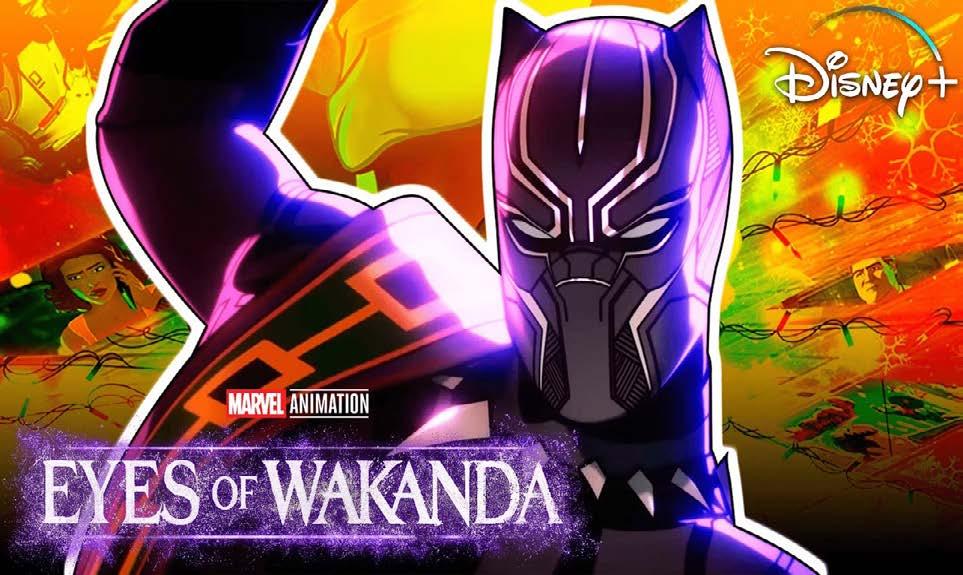
culturally resonant, forging a distinct identity that parallels the recognisable Wakandan elements we’ve seen in live-action. This fluidity also extends to the fights, which makes full use of the freedom animation allows for an exhilarating effect. While the focus is largely Wakandan, that’s not to say everything here is entirely outside of the wider Marvel Cinematic Universe (MCU) mythos, especially with some fan-friendly second-half twists. For what could have been a by-the-numbers standalone project, some of the choices made here by showrunner Todd Harris are
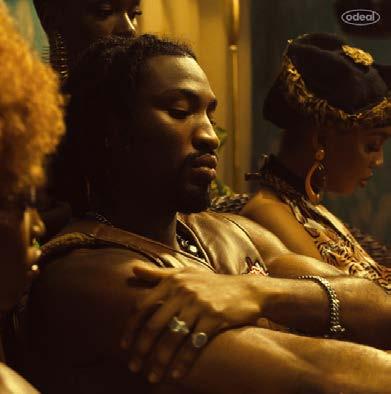
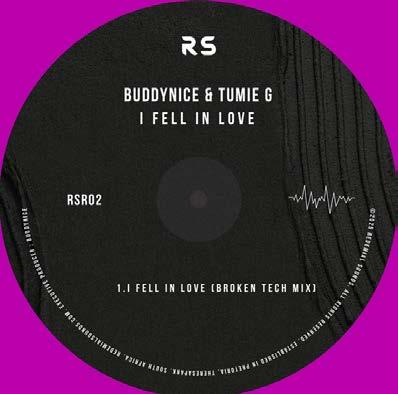
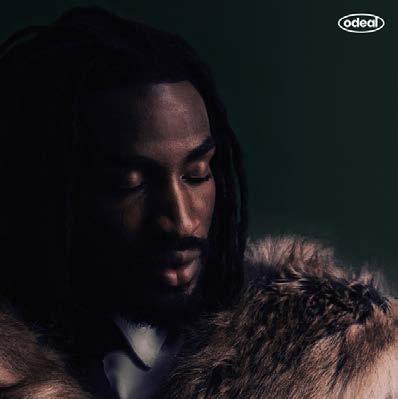
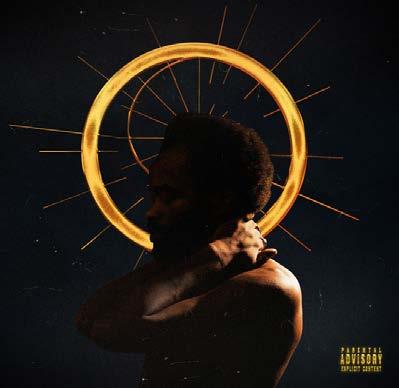
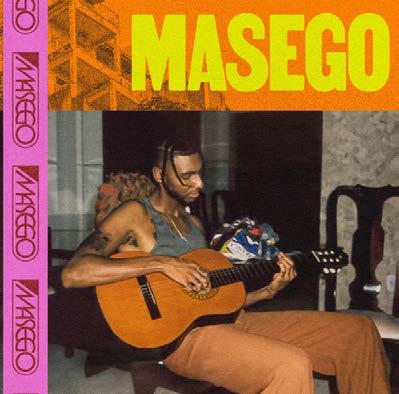
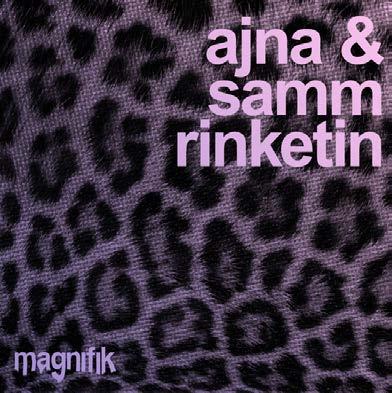
But beyond the breakneck action, the story itself almost moves too fast, covering huge swathes of time and space in only four half-hour episodes.
Just when you emotionally connect to a character, Eyes Of Wakanda swiftly moves onto the next adventure. Extra episodes could have deepened those connections and made the most of this open-ended premise. Instead, what we’re left with is a promising start that will likely seem disposable to casual viewers. That’s unfortunate because at its best, Eyes Of Wakanda represents the true potential of Marvel’s smallscreen efforts, expanding the MCU in ways that ensure Wakanda and this universe at large could go on indefinitely.
